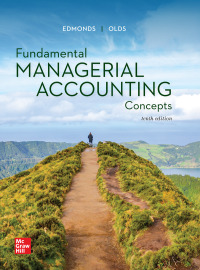Answered step by step
Verified Expert Solution
Question
1 Approved Answer
Multiple Choice (please help answer with reason thank you) Based on the general approach for the impairment model in PSAK 71 / IFRS 9, if
Multiple Choice (please help answer with reason thank you)
- Based on the general approach for the impairment model in PSAK 71 / IFRS 9, if there is a significant increase in credit risk, the accounting treatment is as follows:
- Interest income is recognized at the effective interest rate times the net carrying amount
- Interest income is not recognized
- The measurement of impairment is based on 12 months of credit losses
- The measurement of impairment is based on credit losses over its lifetime
- In the general model (general model) of impairment, when a financial asset enters stage 3, then
- Expected credit losses are recognized using a 12-month expected credit loss and interest income is recognized at the effective interest rate on the gross carrying amount.
- The recognition of expected credit losses using lifetime expected credit losses and interest income is recognized at the effective interest rate on the net carrying amount.
- The recognition of expected credit loss using lifetime expected credit losses and interest income is recognized at the effective interest rate on the gross carrying amount.
- The recognition of expected credit loss using a 12-month expected credit loss and interest income is recognized at the effective interest rate on the net carrying amount.
- Based on PSAK 71 / IFRS 9, the hedging relationship fulfills all of the following hedge effectiveness requirements, except
- There is an economic relationship between the hedged item and the hedging instrument
- The effect of credit risk does not dominate the changes in value resulting from the economic relationship between the hedged item and the hedged instrument
- The hedging relationship is effective if it meets the requirements of the 80-125% effectiveness test
- The hedging ratio of the hedging relationship is the same ratio of the resulting quantity of the hedged item that is actually hedged and the quantity of the hedging instrument that the entity actually uses to hedge a certain quantity of the hedged item.
- Which of the following financial assets is exempt from applying the general model of impairment:
- Financial assets with low credit risk
- Accounts receivable without a significant funding component
- All right
- Financial assets purchased or derived from financial assets deteriorate
- Which of the following assets should take a simplified approach to impairment:
- All trade receivables and contract assets, with or without a significant financing component
- Lease receivables
- Trade receivables and contract assets without a significant financing component
- Accounts receivable, contract assets, lease receivables
- PT ABC has an investment in convertible bonds, which gives the holder an option to convert the bonds with a certain number of issuer's shares. The entire investment in convertible bonds is classified as:
- Acquisition cost
- Amortized costs
- Fair value through other comprehensive income
- Fair value through profit or loss
- The following is the improper accounting treatment of a modification of financial liabilities that does not result in derecognition of financial liabilities
- Costs incurred in connection with a modification of a financial liability are recognized as an adjustment to the carrying amount of the financial liability
- The difference between amortized cost before modification and after modification is recognized in other comprehensive income
- Recalculate amortized cost by discounting the modified contractual cash flows using the original effective interest rate
- For financial liabilities designated to be measured at fair value through profit or loss, the entity is required to present the impact of changes in the liability's credit risk (own credit risk) in
- Can choose the current period profit or loss or other comprehensive income
- Other comprehensive income
- If the change in liability credit risk (own credit risk) results in a gain, it is recognized in other comprehensive income and if it causes a loss it is recognized in profit or loss for the period
- Profit or loss for the period
Step by Step Solution
There are 3 Steps involved in it
Step: 1

Get Instant Access to Expert-Tailored Solutions
See step-by-step solutions with expert insights and AI powered tools for academic success
Step: 2

Step: 3

Ace Your Homework with AI
Get the answers you need in no time with our AI-driven, step-by-step assistance
Get Started


